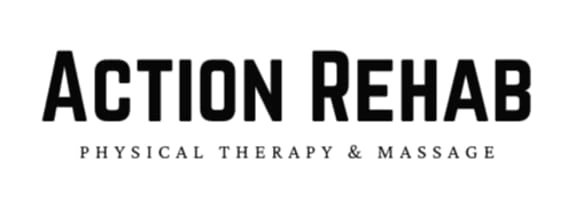As marathon season approaches, many runners are gearing up for the challenge of completing a 26.2 mile race. However, training for such a monumental event requires more than just the desire to cross the finish line. It demands a comprehensive, well-structured approach that not only prepares your body for the physical demands of the race, but also helps prevent injuries along the way.
Running a marathon is a grueling task that can take a toll on your body. The repetitive impact of running for miles on end can lead to a myriad of injuries, such as shin splints, stress fractures, and IT band syndrome.
That’s why in this article, we will discuss the importance of a proper training plan and how following the advice of a physical therapist can help you avoid injury during your marathon journey.
Marathon Training and Its Impact on Your Body
Marathon training is a rigorous and demanding process that requires careful planning and dedication over the course of several months. This type of endurance training involves a mix of running, strength exercises, and rest days to gradually build stamina and improve overall physical and mental fitness. .
1. Physical Adaptations
Endurance training leads to various physical changes in the body, such as improved cardiovascular health, increased muscle strength and endurance, and improved body composition.
By following a structured schedule and progressively increasing mileage, your muscles, tendons, and ligaments become stronger and more resilient. This results in a shift from fast-twitch to slow-twitch muscle fibers, which are more efficient for long-distance running. But it is crucial to find a balance between training intensity and recovery to prevent pushing past your limits.
2. Nutrition and Hydration
In addition to physical training, proper nutrition and hydration play pivotal roles in marathon training. Fueling your body with carbohydrates, proteins, and healthy fats sustains energy levels and facilitates muscle repair.
Electrolyte balance is also essential during long runs to prevent cramping and dehydration. Many runners find it helpful to consult with a dietitian to create a personalized nutrition plan that complements their training. Adequate sleep is also crucial for recovery and mental resilience, allowing the body to heal and adapt to the increasing mileage.
3. Common Injuries
Despite the numerous benefits of marathon training, there is a risk of common running injuries such as shin splints, runner’s knee, Achilles tendinitis, and plantar fasciitis. These injuries can be caused by factors such as improper footwear, overtraining, and inadequate warm-ups.
It is important to have a pre-run routine that includes dynamic stretches and periodically undergo a professional gait analysis to detect any biomechanical issues that may need correction.
4. Prevention and Cross-Training
To prevent injuries, it is essential to incorporate cross-training and strength exercises into your training regimen. These supplementary workouts help build overall body strength and improve muscle imbalances that can lead to injury.
For example, strengthening your core and lower back can enhance running mechanics and reduce strain on your legs. Consistency in these workouts, along with proper rest days, promotes balanced muscular development and prevents overuse injuries.
When and How to Start Marathon Training Safely

Marathon training is a challenging but rewarding journey that requires careful planning and preparation.
From a physical therapist perspective, it’s recommended to begin training at least 16 to 20 weeks before race day. This timeline is ideal for both novice and experienced runners as it strikes a balance between building endurance and minimizing the risk of injuries.
- Introductory Phase (Weeks 1-4): The first four weeks of training can be seen as an introductory phase. During this time, the focus should be on building a strong foundation of aerobic fitness and establishing a regular training rhythm. It is recommended to run three to four days a week, with shorter distances on weekdays and a slightly longer run on the weekend.
- Mid-Phase (Weeks 5-8): As you progress into weeks five to eight, the importance of establishing and following a personalized training plan comes into play. At Action Rehab, our physical therapists can help create a plan tailored to your unique needs and goals. These mid-phase weeks are crucial for building stamina. It is recommended to gradually increase weekday runs by a half-mile to a mile each week and extend the long weekend run. It is also essential to introduce cross-training during this period to enhance overall fitness and address muscle imbalances.
- Transition Phase (Weeks 9-12): In weeks nine to twelve, your mileage will continue to increase, albeit more cautiously. During this phase, it is common to see longer runs ranging from 10 to 15 miles. It is crucial to incorporate stretching routines before and after each run to aid in flexibility and muscle recovery. Your physical therapist may also introduce specific exercises aimed at strengthening the muscles around your knees, hips, and ankles.
- Peak Performance and Tapering Phase (Weeks 13-Race Day): In the final weeks leading up to race day, the focus shifts towards peak performance and tapering. The longest run, peaking at around 20 miles, usually occurs about three to four weeks before the marathon. This prepares your body for the distance while allowing sufficient time for recovery. After this peak run, a tapering period begins, where the overall mileage is reduced to allow your body to heal and consolidate the gains made during training. This is also a prime time to fine-tune your nutrition and hydration strategies with the help of a dietitian.
Essential Injury Prevention Exercises for Runners

Essential injury prevention exercises for runners are pivotal to incorporating into your training regimen to ensure your joints and muscles can handle the stresses of running, especially when preparing for a marathon.
Focusing on knee injury prevention exercises is crucial given that the knees are among the most vulnerable joints for runners. One highly effective exercise is the single-leg squat. Begin by standing on one leg, with the other leg slightly bent off the ground. Slowly bend your standing knee as if you are about to sit down, lowering your body while keeping your back straight. Aim for your thigh to be parallel to the ground before returning to the starting position.
This exercise strengthens the quadriceps, hamstrings, glutes, and core, all of which play a vital role in knee stability and joint protection techniques. Perform three sets of 10-15 repetitions per leg to build endurance and control.
Another cornerstone of knee strengthening is the lateral band walk. Place an elastic resistance band around your thighs, just above the knees. With knees slightly bent, take a step to the side with one leg, followed by the other leg, maintaining tension on the band. Continue stepping sideways for about 10-15 steps before reversing the direction.
This movement engages the gluteus medius and minimus, key muscles in maintaining pelvic stability, which in turn supports your knees during the repetitive motions of running. Consistent practice of lateral band walks, ideally three sets of 15 steps each direction, helps in preventing common overuse injuries like runner’s knee.
For ankle injury prevention, calf raises are indispensable. Standing tall with feet hip-width apart, rise onto your toes, hold the position briefly, and then slowly lower your heels back to the ground. This exercise targets the calf muscles, which support your Achilles tendon and improve ankle stability. To add challenge and increase strength, you can perform single-leg calf raises, ensuring each calf muscle works independently. Aim for three sets of 15-20 repetitions on each leg. In addition to strengthening, it’s essential to incorporate flexibility exercises such as ankle circles—drawing circles with your toes to improve range of motion and reduce stiffness.
One often overlooked yet highly beneficial exercise is the foot doming. This focuses on strengthening the arch of your foot, crucial for shock absorption and reducing impact on your ankles and knees. Sitting with your foot flat on the ground, attempt to “dome” your arch by shortening the length of your foot without curling your toes.
This action lifts the arch muscle, promoting better foot mechanics. Hold each dome for 5 seconds, repeating 10 times for both feet. Strong arches contribute to better overall joint protection techniques, directly benefiting your running form and reducing stress on the meta-structures of your feet.
Lastly, incorporating a balanced routine of dynamic stretches before your runs can dramatically reduce injury risk. Exercises like leg swings help loosen the hip flexors and hamstrings. Standing on one leg, swing the opposite leg forward and backward in a controlled manner, gradually increasing the range of motion.
Another dynamic stretch, walking lunges, prepares your hips, knees, and ankles for the demands of long-distance running. Stepping forward into a deep lunge and pushing off into the next lunge targets key running muscles while also improving flexibility. Dynamic stretches should be part of your pre-run routine, lasting about 5-10 minutes, to ensure your muscles are warm, flexible, and ready for the miles ahead.
Knowing When to Stop Training Before a Marathon

Marathon training is a rigorous and demanding process that requires careful planning and preparation. One crucial aspect of this training is knowing when to stop and allow your body to rest before the big race. This period, known as tapering, is essential for ensuring peak performance and preventing injury.
Understanding Tapering
Tapering is the gradual reduction of training volume in the weeks leading up to a marathon. It involves shifting the focus from building endurance to allowing the body to recover and conserve energy for race day.
One of the main reasons for tapering is to decrease physical and mental fatigue that accumulates during peak training. Without tapering, this fatigue can hinder performance and increase the risk of injury. Tapering allows the body to undergo essential recovery processes such as muscle repair, replenishment of energy stores, and boosting the immune system. Research has shown that a well-executed taper can improve race performance by up to 3%, giving runners a significant edge on race day.
How to Taper
Tapering does not mean complete rest; it involves maintaining a reduced but consistent level of activity.
The first week of tapering should consist of shorter runs at a lower intensity, aiming for about 60-70% of peak volume. The second week should see a further reduction, with runs at about 40-50% of peak mileage and incorporating more rest days.
The third week, leading up to race day, involves mostly light jogging to keep the legs fresh and prevent stiffness. It is also essential to include some high-quality, short runs at marathon pace to maintain fitness levels without overtaxing the body.
Related – The Role of Injury Prevention in Effective Physical Therapy
Final Words
Given the comprehensive nature of marathon training, understanding injury prevention is paramount for a successful race. Training smart involves incorporating dynamic stretches, strength exercises, and adequate rest into your regimen.
Action Rehab, based in Honolulu, houses experts like Tania Yuen-Carvalho, Byron Ho, and Cindy Oania, who are dedicated to creating personalized training plans tailored to your specific needs. Their expertise ensures that your body is fortified against common running injuries through well-designed rehabilitation services.
We recognize the importance of a holistic approach to training. Not only do you need to build endurance and strength, but equally important is knowing when and how to rest. Our professionals can help balance your training schedule, ensuring you increase mileage safely without risking injury. Utilizing our rehabilitation services can pinpoint potential weaknesses before they become problematic, offering exercises and treatments that enhance your performance and resilience.
Whether you’re a seasoned runner or a novice, our experts stand ready to provide comprehensive support every step of the way. Take control of your health with personalized Injury Prevention strategies at Action Rehab. Our expert team is ready to help you strengthen, stretch, and protect your body for an active, pain-free lifestyle. Contact us today to schedule your consultation and start your journey to injury prevention! Reach out to us at actionrehaboffice@gmail.com or give us a call at (808) 597-1555.

